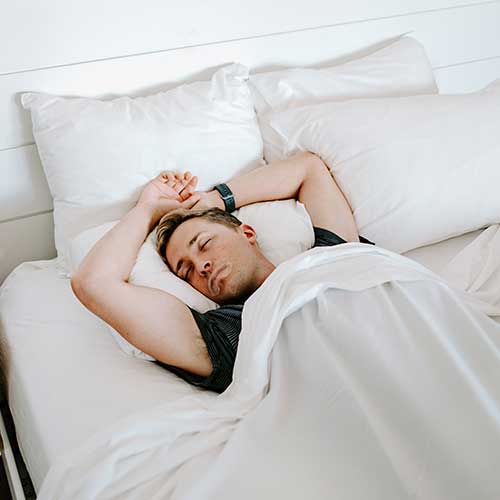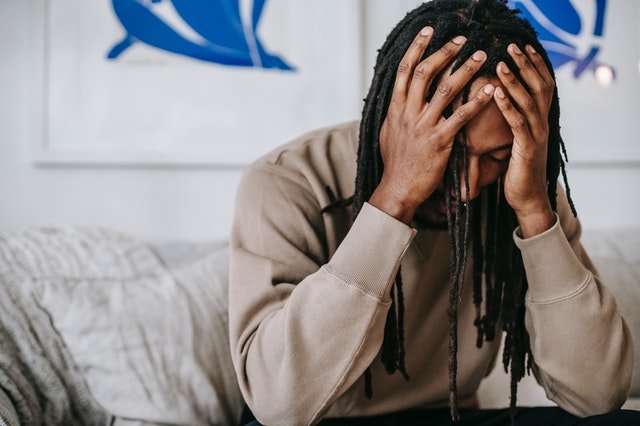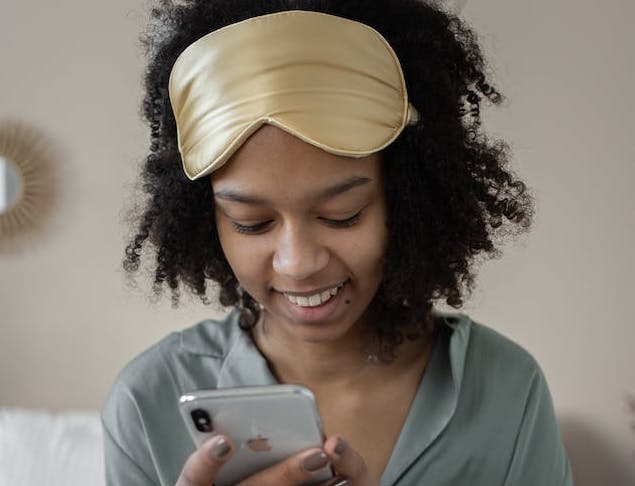The following article was published on Everyday Health, written by Tiarra Mukherjee and medically reviewed by Samuel Mackenzie, MD, PhD, on February 28, 2019.
I know what you’re thinking: Here we go again, another useless health scam. While mouth taping (taping your mouth shut while you sleep) might seem like your typical weird wellness trend, it’s actually grounded in serious science. And the good news is, for us mouth breathers, the solution to a better night’s sleep (and a myriad of health benefits!) may be as simple and cost effective as a roll of surgical tape from CVS.
But first, let me back up.
I love sleep. For as long as I can remember, a good night’s rest has been elusive. I’ve always had trouble falling asleep, likely because I’m a huge overthinker. Being glued to my computer and phone until I hit the pillow hasn't helped much either. But staying asleep has equally been a challenge. I’d wake up several times for sips of water, or to go the bathroom.
I’ve tried everything from meditation to Ambien, but like many people, most mornings I tend to wake up wanting to hit the snooze button. When a friend mentioned that waking up to pee at night was less about being overly hydrated and more likely a sign of poor sleeping habits, I decided to start looking for other sleep aid solutions. Enter: mouth taping.
A Strange Sounding Wellness Trend
The logic is quite simple: When you can’t breathe through your mouth, you will breathe through your nose. It seems like a minimal change, but the health benefits are significant. “Nasal breathing increases nitric oxide production in the sinuses, which has been linked to reduced inflammation, improved sleep, improved memory, and an overall increase in immune system function,“ explains Mark Burhenne, DDS, a family and sleep medicine dentist in Sunnyvale, California, and the creator of AskTheDentist.com. “When you breathe mainly through the nose, you wake up feeling more rested, without a dry mouth or a sore throat.”
According to Dr. Burhenne, this simple hack is just as important a toothbrush — a tool that everyone should own. So a few weeks ago, I figured, what do I have to lose?
What’s So Bad About Mouth Breathing? Stress, Cavities, and More
In fact, there are many downsides of mouth breathing. One study published in December 2013 in the journal Neuroreport found that mouth breathing can lead to high blood pressure, heart problems, and sleep apnea. Mouth breathing also worsens asthma, may cause cognitive dysfunction, and deprives the heart, brain, and other organs of optimal oxygenation. (Not to mention divorce caused by murmuring secrets in your sleep!)
According to Steven Y. Park, MD, ENT specialist in New York City and author of Sleep, Interrupted: A Physician Reveals The #1 Reason Why So Many of Us Are Sick and Tired, breathing through your mouth can also increase your stress responses. And needless to say, more stress equals less sleep.
“Not only does mouth breathing reduce the quality of your sleep, but it disrupts the balance of your oral microbiome and makes you more prone to tooth decay,” says Burhenne, who believes mouth breathing is the number one cause of cavities — even ahead of eating a thousand chocolate chip cookies and not brushing your teeth.
Compare that with the cost and long list of dangerous side effects associated with sleep aids like Ambien or melatonin, and mouth taping starts to seem like a pretty good deal. I’ll take a little stickiness around the mouth and being one dollar poorer any day.
My First Week of Decent Sleep
Of course, the key component to a good night’s sleep is relaxation, which might mean reading or engaging in some pillow talk before bed. I’d bet half my savings your bedtime routine does not include taping your lips down and giving your partner a plastic, closed-mouth kiss before you hit the pillow.
I admit, I felt a little nervous as I tentatively applied the short length of 3M Micropore surgical tape over my mouth that first night. And yes, the first few minutes were a bit uncomfortable. But when I woke up the next morning, something strange happened. For the first time in as long as I could recall, I didn’t feel groggy. Perhaps this was psychosomatic, since I’m told it takes more than a week for the effects of mouth taping to kick in.
So I persisted.
Gradually, after about seven days, I noticed my sleep was getting deeper and I was indeed waking up with more energy. I also noticed that my throat was less parched and I suddenly didn’t have to get up five times a night to pee anymore. For me, that is a priceless change. Having spent several decades feeling like I never got enough rest, the value of being able to feel satisfied with a night’s shut-eye is impossible to overstate.
What I Learned From Mouth Taping
Before any of this, I had no idea that mouth taping had gotten so popular. (I also didn’t know there was such a thing as “sleep specialists.” Then again, I was a lowly mouth breather.) Today, people all over the world have begun to adopt this strikingly simple and cost-effective solution to better sleep.
Mouth taping has its origins in something called the Buteyko Method, created by Russian doctor Konstantin Pavlovich Buteyko, which studies the connection between the way we breathe and overall health. The practice largely focuses on “functional breathing,” or breathing in and out of the nose. Practitioners of the method claim that it improves a number of health issues, including anxiety, ADHD, insomnia, asthma, and more.
This makes sense since, over millions of years of human evolution, our mouths were designed for talking and eating while our noses were designed to do the majority of our breathing. Taking things back to our ancestry, similar to the concept behind the paleo diet, comes with a surprising amount of benefits. And I discovered them firsthand after a week of forcing myself to breathe through my nose as I slept.
Tips for Optimal Mouth Taping
A few tips for those interested in trying this method:
Apply a thin layer of Vaseline to your lips before you adhere tape.This helps reduce the stickiness in the morning. If you feel nervous about completely covering your mouth, you can begin by taping from the top lip — sort of like a plastic mustache — and leave a little space for emergency breathing until you become more comfortable with it.
Use the right tape.Sure, you can use plain surgical tape if you’re the no-frills type. But there are brands like SomniFix that specialize in this kind of sleep process. Each Somnifix strip has a vent so that even if your nose gets completely stuffed up during the night, you can still breathe. And unlike surgical tape, they don’t leave any sticky residue on the lips.
Mold your tape to suit your needs. If you’re using surgical tape, tear off a bit more than you’ll need and fold the ends on each end under to create mini handles. This makes it easy to pull the tape back momentarily during the night if you need to take a sip of water, cough, or talk.
Help Your Body Adjust. You can also try taping your mouth for periods of time during the day so you get used to it.
Although Burhenne has seen many success stories in his own practice, there have not been any scientific studies to confirm that mouth taping is an effective technique for improving sleep. While the wider medical world has largely ignored the importance of nasal breathing and its relationship to overall wellness, Burhenne thinks that is changing now, based on the many success stories he has witnessed firsthand.
“People are frustrated with the answers they are getting from conventional medicine and have taken to the internet for answers,“ he says. “More and more people have tried this relatively simple practice and it has changed their lives.”
The jury is still out but the question remains: Would you try it?
Published by and written for Everyday Health: https://www.everydayhealth.com/sleep/mouth-taping-cheapest-life-hack-better-sleep/



